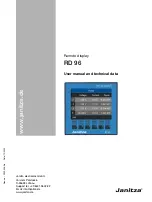
Overview of Fail-safe Systems
1.5 Guide to Working with F-Systems
Safety Engineering in SIMATIC S7
System Manual, 04/2006, A5E00109529-05
1-17
1.5
1.5
Guide to Working with F-Systems
Introduction
This section describes the basic procedure for working with fail-safe systems. Only the
relevant steps for F-systems that differ from the standard procedure are presented.
Planning tasks that depend on the process, such as creating a flowchart or process tag list,
defining a structure, etc., are not described here.
Example Projects
You will find introductory example projects for configuration and programming of:
•
S7 Distributed Safety in
S7 Distributed Safety Getting Started
•
S7 Distributed Safety in
S7 Distributed Safety Configuring and Programming manual
•
S7 F/FH Systems in
Programmable Controllers S7 F/FH manual
•
S7 F/FH Systems in
step7\Examples directory
Planning a System
When planning a system, the planner specifies the applicable safety class (SIL/Category) for
each required safety function based on a risk assessment. This is then used to determine
the component requirements for implementing the safety functions (programmable logic
controllers, sensors, actuators). These decisions influence additional activities such as
hardware design, configuration, and programming.
Note
A functional division of standard and safety functions is important for planning.
















































